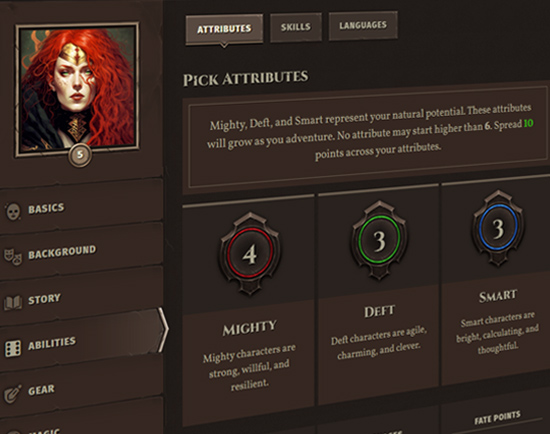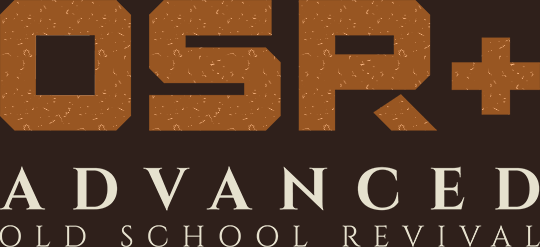Session zero is the most important session you will run as a GM. It's called session zero because it happens before the adventure starts. The purpose of a session zero is twofold: establish buy-in for your players and generate the story hooks necessary to set the stage for the adventure.
Session Zero Structure
In session zero, you give each player a number of randomly generated story hooks: a single bond, and a thing, person, group, and place to incorporate into their character concept. The bond is shared with one other PC, so that each PC comes into the game knowing at least one other PC. The story hooks are then discussed round-robin style at the table, until a narrative emerges that explains how the party has come together for the adventure.
- Present the premise with your pitch deck.
- Each player rolls for a bond they share with one other player, then have each pair of players discuss their bond, round-robin style.
- Each player rolls for their "thing" story hook, then have each player discuss the story hook round-robin style.
- Players then roll for all their remaining story hooks (person, group, place). Discuss these story hooks round-robin style, one at a time.
- Bonded players finalize their bonds given all the things they've learned about the party and themselves thus far. As a twist, have players who are not part of the bond contribute an additional detail. The players who are part of the bond may not reject the addition, but may amend it.
- The GM recaps each player's story hooks and bonds.
- Players decide what faction they intend to join, choose an archetype (if applicable), and then build their characters.
This process should take about 2 hours.
At each step of the process, you should ask clarifying questions and adjust the story hooks and bonds your players come up with in order to push your agenda. Never outright reject a player's idea; instead, say "yes, but" to modify what they propose so that it better serves the premise. The same openness is expected of players in this process.
By the end of session zero, you should be able to answer the following questions for yourself:
- What brought the group together?
- What keeps them together?
- What does each person contribute to the group?
- What is the group's shared goal?
Goals of Session Zero
Nobody should be coming into the session with fixed ideas about what they will play, or what the adventure will be about. Other than your general premise that you pitched to your players to get them to join the table, session zero is intended to be a blank slate for everyone involved.
Encourage players to come into the session without an idea for a specific character in mind, and to be open to playing a character that reflects what's developed during the session. In the same way, you should be open to expanding or altering your premise to suit the ideas that emerge as your players figure out who they will play.
Generate Story Hooks
A story hook is just tidbit of backstory a player develops based on a randomized prompt. When you conduct session zero, you go around the table providing players with these randomized prompts (a bond with another PC, a person, place, thing, and group), and then you help them develop the idea so they can get a clearer sense of their character. We gather up story hooks for each player during session zero to use as seeds for developing the adventure.
Put simply, session zero is a formal way for you to fish for ideas that you'll use later. It's equal parts creative brainstorming by your players and serendipity from random tables. The juxtaposition of the random and the intentional will complement and extend your agenda in unexpected ways.
Establish Player Buy In
In OSR+, players play the game in order to fulfill their PCs' goals within the fiction. This is called narrative fulfillment, and lies at the heart of what makes RPGs different than other games. In session zero, we figure out what those goals are, and how they can be translated into story hooks that you can use to build the adventure with. But what's most important about story hooks isn't that they are building blocks for the adventure, it's that each story hook your players create reflects their buy-in to the game itself.
Why Story Hooks?
A story hook is an explicit way of a player saying "This is something I care about exploring in the game." And while you don't always have to feature a story hook in an adventure as it was presented by the player, you should at least feature what it represents to them as an acknowledgment of their contribution to the fiction.
Example Story Hook
For example, if a player introduces a story hook "My best friend was captured by marauders when I was very young, and this is why I'm taking the Misanthrope flaw," they're telling you two things explicitly:
- they are interested in exploring what happened to their best friend, and/or:
- they're interested in coming to terms with, or at least grappling with, what it means to be misanthropic.
Either of these can be interesting hooks into the adventure that can enable their PC to fulfill their narrative goals. Reward your players' creative input by incorporating their ideas into your agenda.
 Archetypes
Archetypes Armor
Armor Classes
Classes Conflicts
Conflicts Cultures
Cultures Ethos
Ethos Flaws
Flaws Glossary
Glossary Kits
Kits Maleficence
Maleficence Origins
Origins Shields
Shields Skills
Skills Spells
Spells Stances
Stances Status Effects
Status Effects Tactics
Tactics Talents
Talents Techniques
Techniques Treasure
Treasure Weapons
Weapons











 Hall of Heroes
Hall of Heroes Hall of Legends
Hall of Legends



 Dungeons & Flagons
Dungeons & Flagons